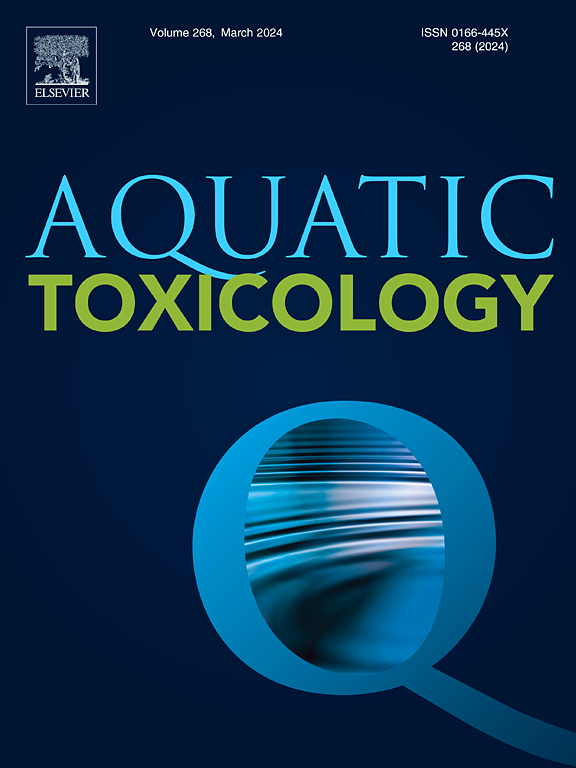Effects of ammonia on the survival and physiology of juveniles and adults of Macrobrachium acanthurus (Caridea: Palaemonidae)
IF 4.1
2区 环境科学与生态学
Q1 MARINE & FRESHWATER BIOLOGY
引用次数: 0
Abstract
Water quality is a key factor influencing the survival and health of aquatic organisms. This study aims to assess the effects of ammonia exposure on Macrobrachium acanthurus, including juveniles, adult males, and ovigerous females. Macrobrachium acanthurus were exposed to total ammonia nitrogen (TAN) concentrations of 0, 20, 40, 60, and 80 mg L⁻¹ for 96 h to assess survival, total hemocyte count (THC), gill damage, and recovery capacity. The median lethal concentration (LC50) of TAN after 96 h of exposure was 54.5 mg L⁻¹ (3.1 mg L⁻¹ NH₃) for juveniles, 50.4 mg L⁻¹ (2.9 mg L⁻¹ NH₃) for adult males, and 59.2 mg L⁻¹ (3.4 mg L⁻¹ NH₃) for ovigerous females. To avoid sub-lethal effects, TAN levels should remain below 5.0 mg L⁻¹ (0.3 mg L⁻¹ NH₃) at 26 °C and pH 8.0, ensuring animal welfare from the nursery stage onward. Reversible and moderate gill lesions occurred at 20 and 40 mg L⁻¹ of TAN, while 60 and 80 mg L⁻¹ resulted in irreversible damage. However, gill recovery was observed after exposure to 20 mg L⁻¹ of TAN. Concentrations above LC50 affected innate immune response, regardless of sex, with changes in THC. These findings demonstrate the sensitivity of M. acanthurus to ammonia exposure and provide results of safe concentrations. Those results will contribute to species conservation and inform sustainable aquaculture practices for native freshwater species in Brazil.
求助全文
约1分钟内获得全文
求助全文
来源期刊

Aquatic Toxicology
环境科学-毒理学
CiteScore
7.10
自引率
4.40%
发文量
250
审稿时长
56 days
期刊介绍:
Aquatic Toxicology publishes significant contributions that increase the understanding of the impact of harmful substances (including natural and synthetic chemicals) on aquatic organisms and ecosystems.
Aquatic Toxicology considers both laboratory and field studies with a focus on marine/ freshwater environments. We strive to attract high quality original scientific papers, critical reviews and expert opinion papers in the following areas: Effects of harmful substances on molecular, cellular, sub-organismal, organismal, population, community, and ecosystem level; Toxic Mechanisms; Genetic disturbances, transgenerational effects, behavioral and adaptive responses; Impacts of harmful substances on structure, function of and services provided by aquatic ecosystems; Mixture toxicity assessment; Statistical approaches to predict exposure to and hazards of contaminants
The journal also considers manuscripts in other areas, such as the development of innovative concepts, approaches, and methodologies, which promote the wider application of toxicological datasets to the protection of aquatic environments and inform ecological risk assessments and decision making by relevant authorities.
 求助内容:
求助内容: 应助结果提醒方式:
应助结果提醒方式:


